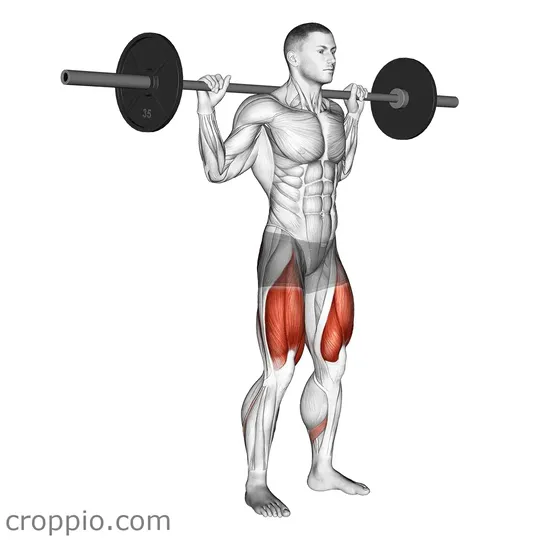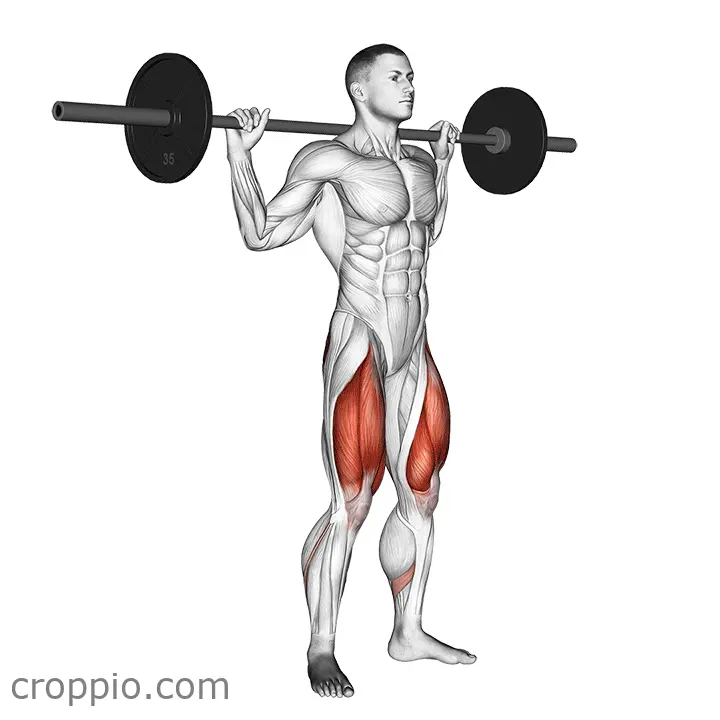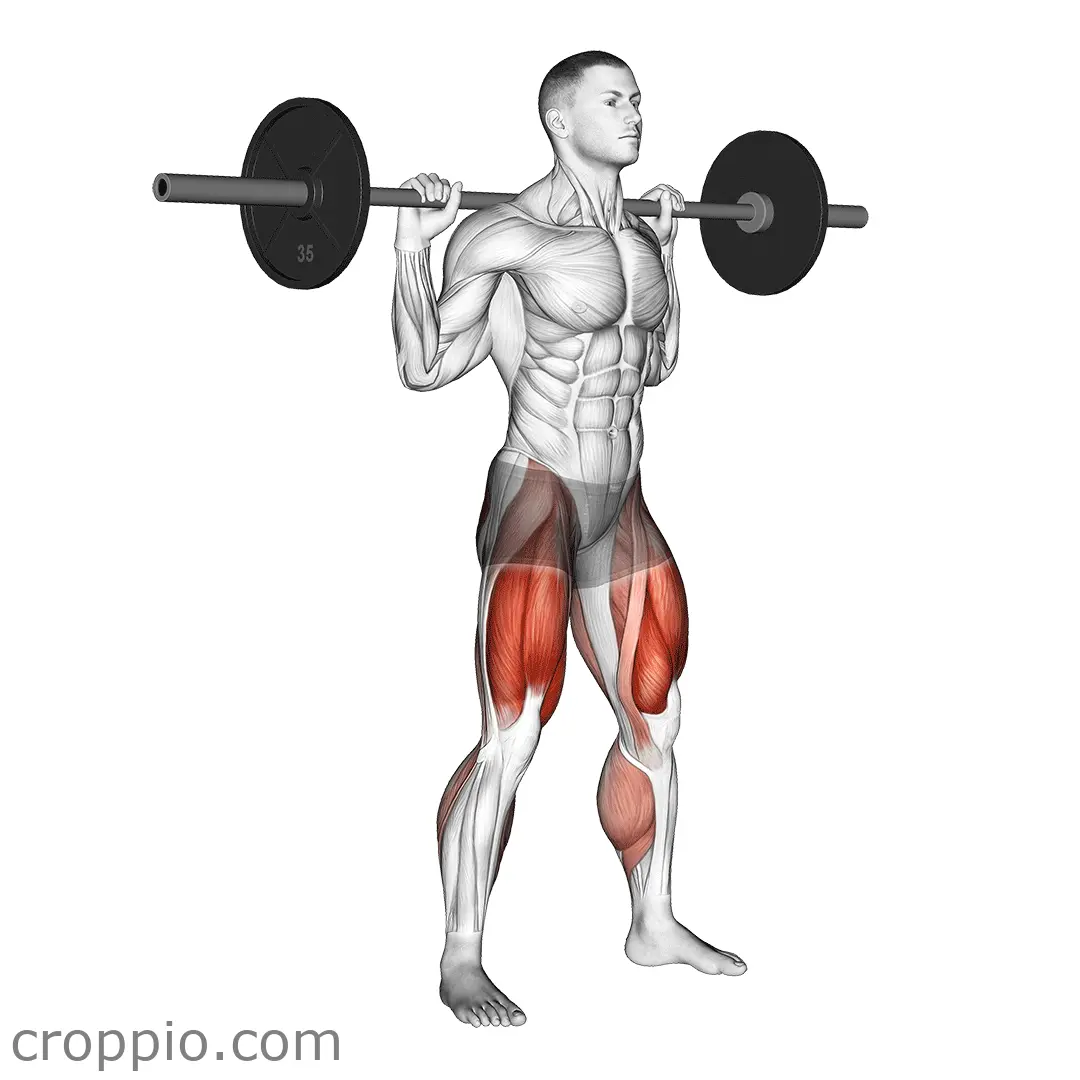High Bar Squat Form

Muscles Involved
The high bar squat primarily targets the quadriceps, making it an effective exercise for building strength and muscle mass in the front of the thighs. The activity also engages the glutes and hamstrings, contributing to the development of the posterior chain. Additionally, the high bar squat involves secondary stabilizing muscles, such as the core, which aids in maintaining balance and proper posture throughout the movement. The erector spinae in the lower back also plays a crucial role in supporting the spine during the squat.
Top Mistakes
- Allowing the knees to collapse inward: This can lead to improper alignment and increase the risk of injury.
- Leaning too far forward: Maintaining an upright torso is essential for proper weight distribution and technique.
- Not going deep enough: Failing to achieve parallel or below depth diminishes the effectiveness of the exercise.
- Incorrect bar position: Placing the bar too low on the back changes the mechanics of the squat, which can lead to poor form.
Execution Tips
- Bar placement: Position the barbell on the upper traps, just below the neck, to ensure proper leverage.
- Foot positioning: Stand with your feet shoulder-width apart and slightly turned out, ensuring a stable base.
- Bracing the core: Engage your core muscles to support the spine and maintain stability.
- Controlled descent: Lower yourself slowly, keeping your chest up and back straight, while pushing your knees out.
- Drive through the heels: As you return to standing, push through your heels to activate the muscles effectively.
Workouts
The high bar squat can be incorporated into a comprehensive workout routine by performing 3 to 5 sets of 6 to 12 repetitions. It can be paired with exercises such as Romanian deadlifts, leg presses, or lunges to target the lower body comprehensively. Additionally, including core exercises like planks or hanging leg raises can help reinforce the stabilization required during squats.
Conclusion
The high bar squat is a versatile exercise that offers numerous benefits, including increased lower body strength, improved muscle tone, and better functional mobility. By focusing on proper form and avoiding common mistakes, you can ensure safe execution while maximizing muscle engagement. This exercise can play a pivotal role in any strength training program, helping you achieve your fitness goals efficiently.



